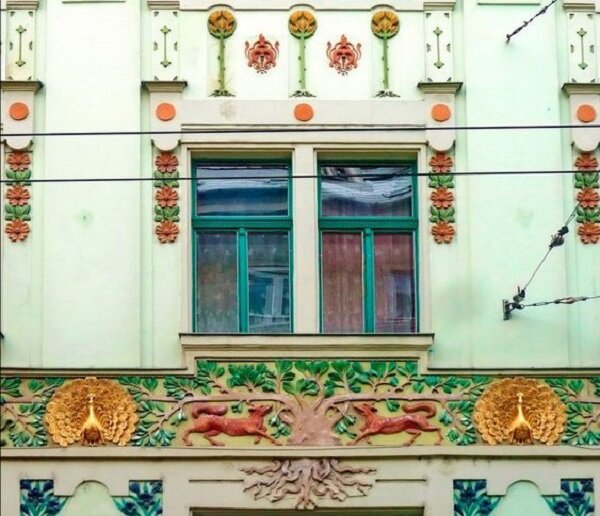#16224. Exquisite Art Nouveau Facade with Rich Floral and Zoomorphic Decoration

This impressive facade represents a beautiful example of Art Nouveau architecture from the early 20th century. The light green background of the wall becomes a canvas for rich decorative design. Particular attention is drawn to the central composition below the window — a bas-relief depicting two animals (presumably lions or griffins) symmetrically positioned on either side of a stylized tree. This composition is framed by circular medallions with relief images of peacocks, executed in gilded technique.
The window opening is framed with green frames, creating a pleasant contrast with the light background of the facade. Above the window is a decorative frieze with plant motifs, including stylized flowers and circular elements. Vertical decorative elements in the form of stylized plant ornaments flank the window, adding rhythm to the composition.
The upper part of the facade is adorned with three expressive floral motifs on thin stems, resembling thistles or other stylized plants characteristic of Art Nouveau. These elements, executed in a red-orange palette, stand out effectively against the light background.
This facade demonstrates the key principles of Art Nouveau: flowing lines, abundance of natural motifs, stylized plant and animal forms, asymmetry in details within an overall symmetrical composition. For modern private home facade design, these techniques can be borrowed and adapted to a more restrained execution: for example, using localized decorative elements with plant motifs in the entrance or window areas, applying contrasting framing for window openings, and including symmetrical decorative panels with reliefs as accent elements.